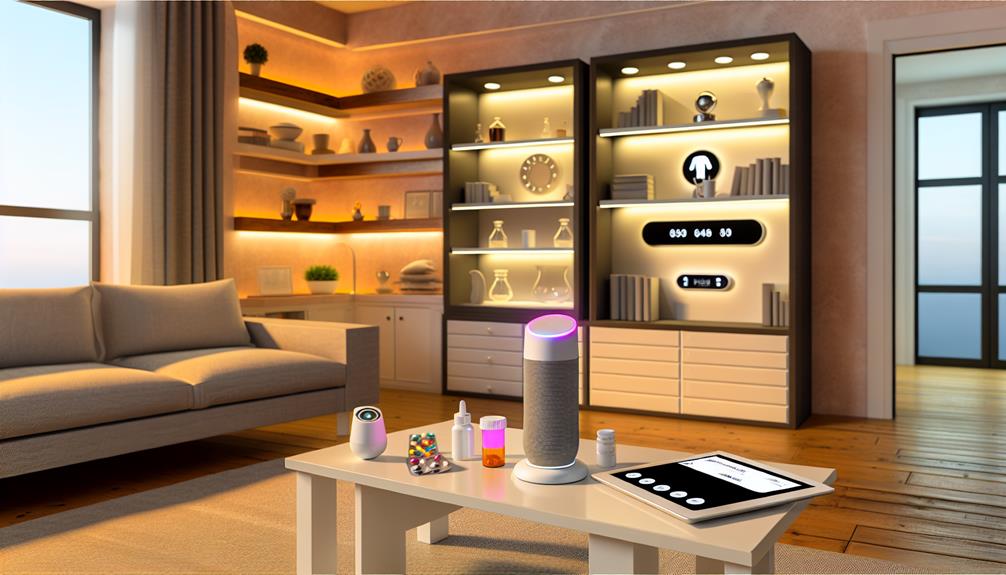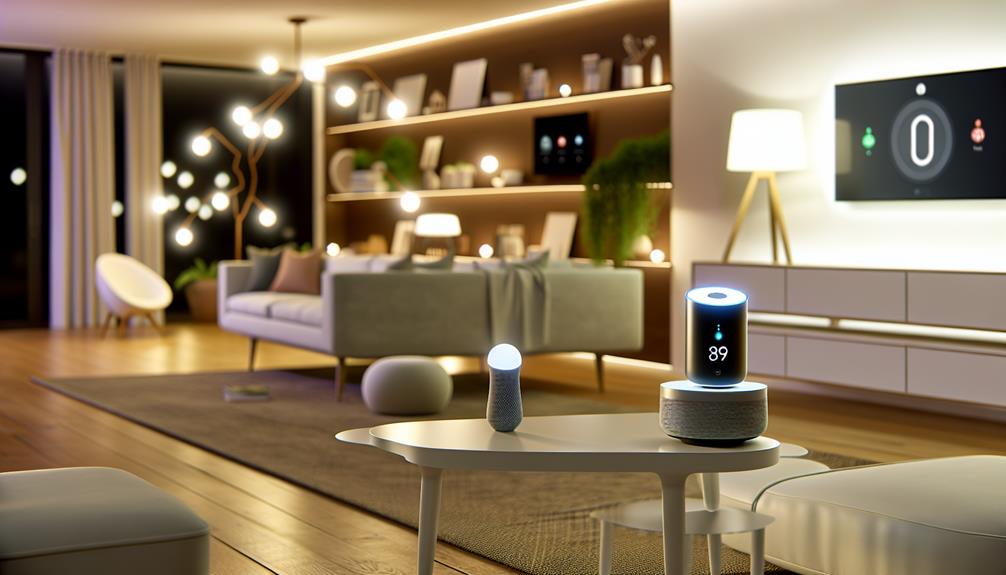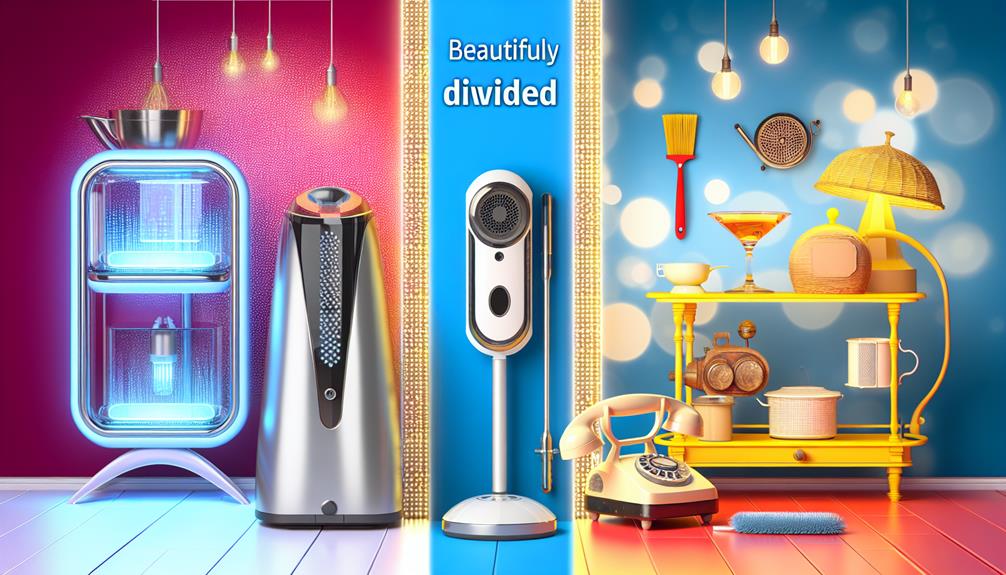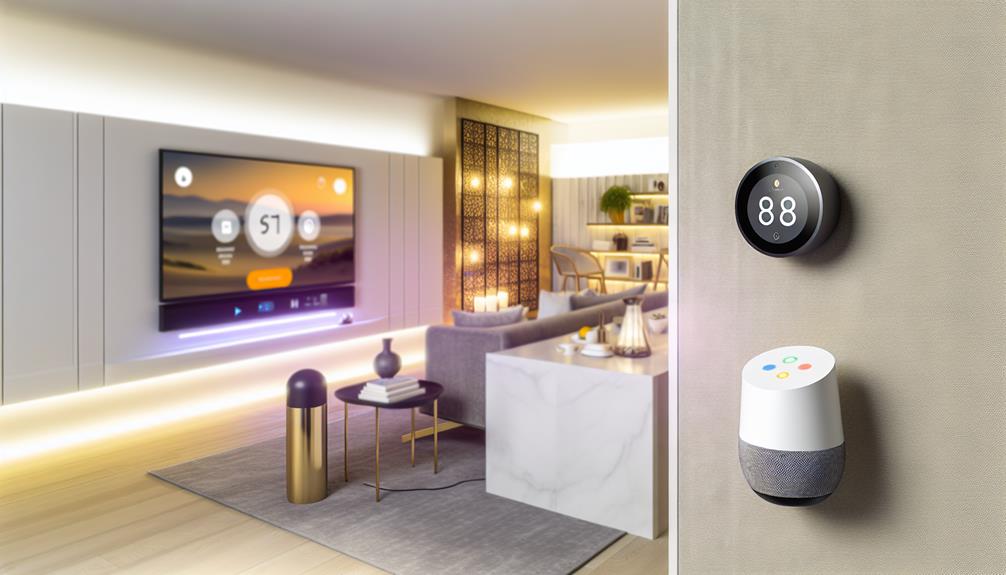7 Best Smart Home Devices for Elderly Support
As technology continues to evolve, its integration into the lives of seniors offers unprecedented opportunities for enhancing their quality of life. A range of smart home devices now exists, specifically designed to support elderly individuals by promoting safety, independence, and effective communication with caregivers and family members. From voice-activated assistants that facilitate daily tasks to advanced fall detection sensors that provide peace of mind, these innovations serve a critical role. Understanding the specific functionalities of these devices can reveal their potential impact on elderly support systems, leading to a more secure and connected environment.
Key takeaways
- Voice-activated assistants enhance accessibility and foster connection, empowering seniors through intuitive communication and reducing feelings of isolation.
- Smart medication dispensers ensure adherence to medication schedules with reminders, real-time feedback, and remote monitoring capabilities for caregivers.
- Fall detection sensors automatically detect falls and trigger emergency responses, promoting safety and independence for elderly individuals.
- Home monitoring cameras provide peace of mind through real-time monitoring, motion detection, and two-way communication for seniors and their families.
- Smart lighting solutions offer automated systems that reduce fall risks and enhance comfort, with voice-controlled options for greater accessibility.
Voice-Activated Assistants
Voice-activated assistants have emerged as a transformative technology in the domain of elderly support, offering a hands-free interface that enhances accessibility and convenience. These devices utilize advanced natural language processing to understand and respond to user queries in real time, making communication intuitive and straightforward.
For seniors who may face mobility challenges or cognitive decline, the ability to issue voice commands provides a sense of independence and empowerment. The personalized responses generated by these assistants can be tailored to individual preferences, ensuring that users feel valued and understood.
For example, seniors can set reminders for important events, manage daily schedules, or even ask for companionship through casual conversation. This technology fosters a feeling of connection, reducing feelings of isolation often experienced in later years.
Moreover, integrating voice-activated assistants into the home environment creates an ecosystem that encourages engagement and interaction. By simplifying tasks such as controlling smart devices or accessing information, these tools contribute positively to the overall well-being of elderly users.
Ultimately, voice-activated assistants are not just gadgets; they are essential companions that enhance quality of life, promoting a sense of belonging and autonomy among seniors.
Smart Medication Dispensers
Smart medication dispensers play an essential role in supporting elderly individuals by ensuring they adhere to their medication schedules.
These devices feature user-friendly interfaces and provide medication reminders and alerts, reducing the risk of missed doses.
Additionally, remote monitoring capabilities allow caregivers to oversee medication compliance, enhancing the overall safety and well-being of their loved ones.
Medication Reminders and Alerts
Managing medications can be a challenging task for the elderly, often leading to missed doses or incorrect intake. Smart medication dispensers equipped with medication reminders and alerts can greatly improve the management of prescriptions, ensuring that the elderly adhere to their medication schedules effectively.
These devices feature advanced pill organization systems that sort and dispense medications at the programmed times, reducing the risk of errors.
Adherence tracking capabilities further enhance the utility of these dispensers by providing real-time feedback on whether medications have been taken as prescribed. This feature not only allows caregivers and family members to monitor compliance but also fosters a sense of accountability and independence for the elderly.
Many smart dispensers can send notifications to a connected smartphone, allowing users to stay informed about their medication routines.
Easy-to-Use Interfaces
While technology can sometimes present challenges for older adults, the design of easy-to-use interfaces in smart medication dispensers greatly enhances user experience and accessibility. These devices often feature user friendly navigation, allowing seniors to manage their medications effortlessly. The intuitive layout guarantees that even those with limited technical skills can understand and utilize the system effectively.
One of the key elements contributing to this accessibility is touchscreen simplicity. A clear, bright display with large icons provides immediate recognition and understanding of functions, reducing the likelihood of errors. Seniors can quickly identify when it's time to take their medications, thanks to straightforward prompts and visual cues.
Moreover, many smart medication dispensers incorporate voice assistance, offering an additional layer of support for those who may prefer auditory guidance. This feature fosters a sense of independence, empowering older adults to take charge of their health without feeling overwhelmed by technology.
Ultimately, the thoughtful design of these devices not only promotes safety and compliance with medication schedules but also nurtures a sense of belonging and connection to their well-being. This enables seniors to live more confidently and securely in their own homes.
Remote Monitoring Capabilities
The integration of remote monitoring capabilities in smart medication dispensers represents a significant advancement in elderly care, enhancing both safety and peace of mind for seniors and their caregivers.
These devices not only automate the dispensing of medication but also provide valuable health data, allowing caregivers to track adherence and optimize treatment plans.
Smart medication dispensers can connect to mobile applications, enabling real-time monitoring of medication schedules. This connectivity guarantees that caregivers receive notifications if a dose is missed or if the dispenser is malfunctioning.
Such proactive communication fosters a sense of belonging among caregivers, as they can promptly address issues and provide support, even from a distance.
Additionally, the health data collected by these devices can offer insights into medication effectiveness and overall well-being, empowering caregivers to make informed decisions about their loved ones' health.
The combination of automated dispensing and remote monitoring creates an environment where seniors can maintain independence while guaranteeing that they receive the necessary care.
Ultimately, smart medication dispensers not only streamline medication management but also strengthen the bond between seniors and their caregivers, fostering a supportive and connected home environment.
Fall Detection Sensors
Fall detection sensors are vital components of modern smart home systems designed to enhance the safety and well-being of elderly individuals. These innovative devices utilize wearable technology or strategically placed sensors throughout the home to detect falls automatically. Upon detection, they can trigger an emergency response, guaranteeing timely assistance for those in need.
| Feature | Benefits | Examples |
|---|---|---|
| Immediate Alerts | Quick response to emergencies | Fall detection watches |
| Integration with Systems | Seamless connectivity | Smart home hubs |
| User-Friendly Design | Easy for seniors to use | Pendant-style sensors |
The integration of fall detection sensors into a smart home ecosystem not only fosters independence but also provides peace of mind for both seniors and their families. Knowing that help is just a notification away allows elderly individuals to feel secure in their daily activities. As the aging population continues to grow, the demand for reliable and effective solutions like fall detection sensors remains essential in promoting a supportive living environment. By embracing this technology, families can guarantee their loved ones are safeguarded, enhancing their quality of life and sense of belonging.
Home Monitoring Cameras
Safety and security are paramount concerns for elderly individuals living independently, and home monitoring cameras play an essential role in addressing these needs.
These devices provide peace of mind not only for seniors but also for their families, ensuring that loved ones can be monitored effectively.
Here are three key benefits of home monitoring cameras:
- Real-Time Monitoring: With wireless connectivity, caregivers and family members can access live feeds from anywhere, allowing them to check in and respond quickly in case of emergencies.
- Activity Alerts: Most modern cameras come equipped with motion detection and alert systems, notifying caregivers of unusual activity, which can be vital in preventing accidents or intrusions.
- Enhanced Communication: Many cameras feature two-way audio, enabling seniors to communicate with family or caregivers effortlessly, fostering a sense of connection and belonging.
While home monitoring cameras offer significant advantages, it is essential to address privacy concerns.
Ensuring that these devices have robust security features and clear privacy policies helps protect the dignity and autonomy of elderly individuals while maximizing their safety.
Smart Lighting Solutions
Smart lighting solutions play an essential role in enhancing the safety and comfort of elderly individuals in their homes.
Automated lighting systems can adjust brightness based on time of day or occupancy, reducing the risk of falls during nighttime.
Additionally, voice-controlled smart bulbs offer convenience and accessibility, allowing users to manage their lighting effortlessly.
Automated Lighting Systems
Automated lighting systems have revolutionized the way we approach home illumination, especially for the elderly. These systems not only enhance safety but also foster a sense of independence and comfort within their living spaces.
By utilizing advanced technology, automated lighting solutions can adapt to the needs of older adults, ensuring they remain connected to their home environment.
Key features of automated lighting systems include:
- Motion Sensors: These devices detect movement and activate lights, providing illumination when needed and reducing the risk of falls in dark areas.
- Light Schedules: Users can set specific times for lights to turn on or off, creating a predictable routine that can enhance security and ease anxiety.
- Remote Control Options: Family members can control lighting remotely, ensuring their loved ones are safe and comfortable even when they are not physically present.
With automated lighting systems, elderly individuals can enjoy a more secure and inviting home atmosphere.
This technology not only addresses practical concerns but also helps cultivate a greater sense of belonging and well-being, making daily life more manageable and enjoyable.
Voice-Controlled Smart Bulbs
Voice-controlled smart bulbs represent an innovative advancement in home lighting solutions, complementing traditional automated systems. These devices empower seniors to manage their living environments effortlessly, fostering independence and enhancing comfort. By utilizing voice commands through smart assistants, users can easily adjust brightness, change colors, or turn lights on and off, making it particularly beneficial for those with mobility challenges.
One of the standout smart bulb features is their energy efficiency. These bulbs consume considerably less energy than conventional incandescent lights, leading to lower electricity bills and a reduced environmental footprint. Additionally, many smart bulbs allow users to set schedules or create lighting scenes, further optimizing energy usage while ensuring that homes remain well-lit and inviting.
Moreover, voice-controlled smart bulbs can be integrated with other smart home devices, creating a seamless ecosystem that promotes safety and convenience. For elderly individuals, this connectivity can mean receiving reminders or alerts through the lighting system itself.
Essentially, voice-controlled smart bulbs not only illuminate homes but also serve as an essential component in the quest for a comfortable, supportive living environment for seniors.
Automated Home Security Systems
A growing number of households are turning to advanced home security systems to enhance safety and peace of mind for elderly residents. These systems integrate various technologies, ensuring a thorough approach to home safety. With features like smart doorbells, security cameras, and motion sensors, families can monitor their loved ones from anywhere.
Key components of automated home security systems include:
- Smart Locks: These allow for secure access control, enabling caregivers to manage entry without physical keys.
- Emergency Alerts: Systems can send immediate safety notifications to family members or emergency services if unusual activity is detected.
- Network Security: Ensuring that all devices are protected from unauthorized access is essential for maintaining privacy and safety.
Connected Health Devices
Connected health devices are revolutionizing the way elderly individuals manage their health and wellness, providing crucial support that enhances their independence and quality of life. These innovative tools, including wearable trackers, empower seniors to monitor critical signs, physical activity, and overall wellness in real-time.
By seamlessly integrating with smartphones and home networks, they foster a sense of connection and belonging, allowing users to share health data with caregivers and family members.
Telehealth services further complement these devices by offering remote consultations and health assessments, reducing the need for frequent in-person visits. This not only guarantees timely medical attention but also alleviates the stress associated with transportation and mobility challenges.
Many connected health devices also feature medication reminders and health tracking apps, which can markedly enhance adherence to treatment plans.
As technology continues to advance, the synergy between connected health devices and telehealth services will create a supportive ecosystem for the elderly, encouraging proactive health management while nurturing their sense of autonomy.
Ultimately, these innovations pave the way for a future where seniors can thrive in their own homes, surrounded by the care and support they deserve.
Frequently Asked Questions
How Do I Choose the Best Smart Home Device for My Elderly Parent?
Choosing the ideal smart home device for an elderly parent is akin to selecting a trusted companion. Prioritize user-friendly interfaces and remote monitoring capabilities to enhance safety, guarantee ease of use, and foster independence in daily living.
Are These Devices Compatible With Existing Home Technology?
Device compatibility is essential when selecting smart home technology. Ensuring seamless technology integration with existing systems enhances usability, promotes efficiency, and fosters a sense of belonging by creating a cohesive and supportive living environment for users.
What Is the Average Cost of Smart Home Devices for Elderly Support?
The average cost of smart home devices varies greatly, typically ranging from $50 to $300. Budget considerations should include device features, as advanced functionalities may enhance usability and safety for elderly users, ensuring a worthwhile investment.
Can I Integrate Multiple Smart Devices Into One System?
Imagine a symphony, where each instrument harmonizes to create a beautiful melody. Similarly, device compatibility allows seamless system integration, enabling multiple smart devices to work together efficiently, enhancing functionality and user experience within a cohesive smart home environment.
What Privacy Concerns Should I Consider With Smart Home Devices?
When considering smart home devices, prioritize data security and user consent. Make certain that personal information is protected and that you are aware of how your data is used, fostering a sense of community and trust.



